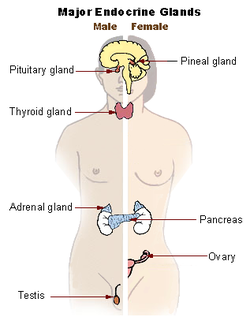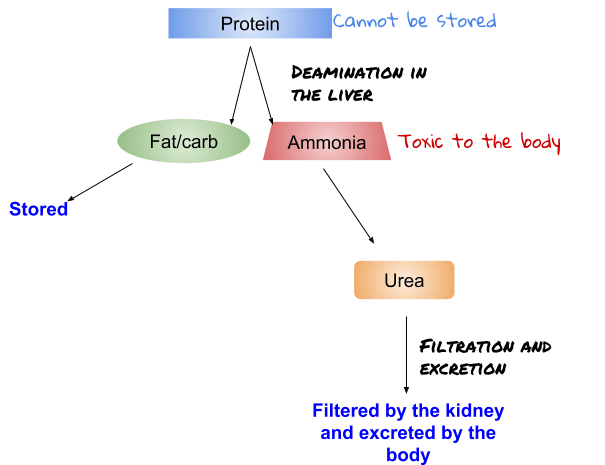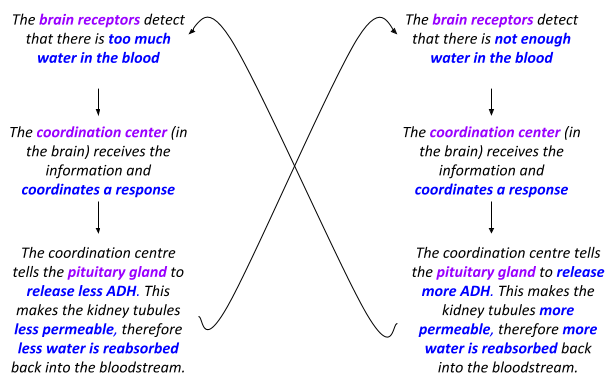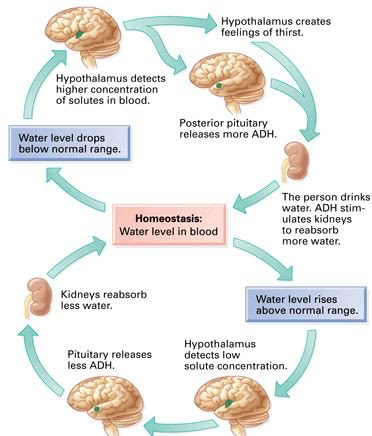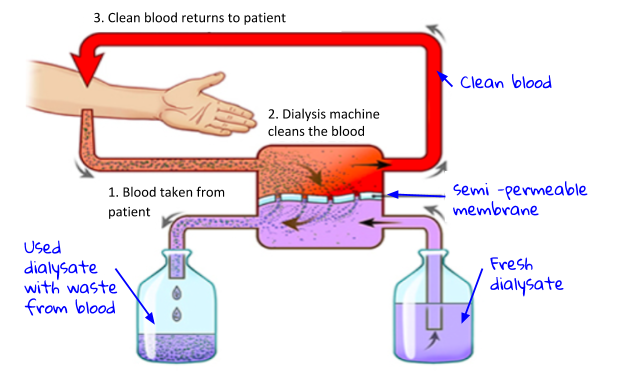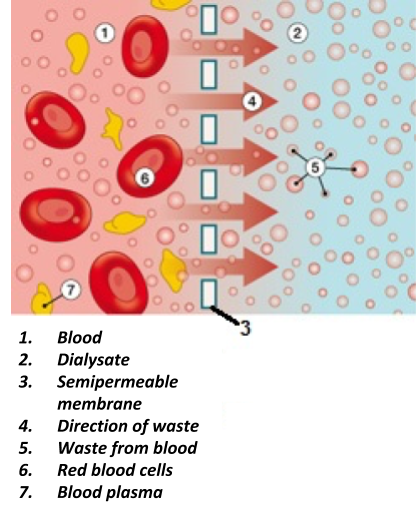The Endocrine System
Hormones
Hormones are chemicals that travel around the blood to send messages to activate target cells. Hormones regulate bodily processes that need adjusting all the time.
The Endocrine system
The Endocrine system is made up of various endocrine glands. Endocrine glands produce and release hormones into the bloodstream. These hormones react to changes in the environment or inside our bodies.
Endocrine glands:
The pituitary gland: produces lots of hormones that regulate the conditions within the body. This releases hormones that actually tell the other glands when to release hormones. This is why it is known as the master gland.
The Pancreas: This produces a chemical called insulin which regulates blood glucose levels.
The Thyroid: This produces thyroxine, which helps to control the rate of metabolism, temperature and heart rate.
The adrenal gland: This gland produces adrenaline, which helps to prepare the body and mind for fight or flight responses.
The ovaries (in females): These produce oestrogen which help to control the menstrual cycle in women.
The testes (in males): These produce testosterone which help to control sperm production.
Nerves and Hormones
Even though hormones and nerves are responsible for sending messages around the body, they are both very different. Nerves send the messages through fast electrical impulses that move through nerve cells. Hormones send messages via chemicals that travel around the blood (which is much slower than nerves). The effect of nerve impulses act for a short time whereas the effect of hormones acts over a long time.
Summary:
Hormones
Nerves
Slow action (relative to nerves)
Fast action
Act for a long time
Act for a short time
Acts generally
Acts precisely
Control of Blood Glucose Levels
Blood glucose (sugar) levels change constantly throughout the day. __Insulin is a hormone that helps prevent the the blood glucose levels from getting too high. __
Insulin is produced by the pancreas (a gland).
Here is what happens step by step:
- When you eat meal containing carbohydrates, your pancreas detects a rise in glucose levels (since carbohydrate breaks down into glucose).
- The pancreas then releases insulin into the blood
- Insulin makes body cells absorb more glucose from the blood. Liver and muscle cells absorb more glucose and convert it into glycogen.
- This causes blood glucose levels to drop.
Glucagon (HIGHER)
Glucagon is another hormone that’s produced by the pancreas and helps to prevent the blood glucose levels from getting too low.
Here’s what happens step by step:
- When your blood glucose levels decrease, the pancreas detects this.
- The pancreas produces glucagon when it detects that there is not enough glucose in the blood.
- Glucose can be stored in the liver and muscle cells as glycogen. Glucagon makes the glycogen converted back into glucose. This then enters the blood.
- This causes the blood glucose levels to increase.
Diabetes
Type 1 diabetes
Type 1 diabetes is an illness in which someone’s pancreas doesn’t produce enough insulin. This could be fatal the persons glucose levels will be too high.
Type 1 diabetes can be kept under control in the following ways:
- Insulin therapy - This is when people inject themselves with insulin since they can’t produce enough themself.
- __Be careful with what you eat __- This makes sure that there isn’t too much glucose in the blood.
- __Exercise regularly __- This helps to reduce blood glucose levels since it increases the metabolism of the cells which then take up glucose faster.
Type 2 diabetes
Type 2 diabetes is an illness in which someone becomes resistant to their own insulin. People with type 2 diabetes still produce enough insulin but their cells don’t respond to the insulin properly. This can cause the glucose levels to increase to a very dangerous level. Being overweight can increase your chances of getting type 2 diabetes.
People can control type 2 diabetes in the following ways:
- Controlling the amount of carbohydrates you eat.
- Regular exercise - this increases the metabolism rate of the cells which helps to control the blood glucose levels.
Control of Water Content
What do the Kidneys do?
The kidneys are kind of like a sieve for our blood.
- When blood passes through the kidneys, substances are filtered out of them, this is called filtration.
- The useful substances, such as glucose and some ions, get reabsorbed into the blood. This is called selective reabsorption.
- The waste substances, such as urea, leave the body through urine.Excess water and ions are also lost in urine.
Our body needs to constantly maintain our water content
Our cells need water in order to respire. We lose water every day through breath, sweat and urine. We cannot control how much we breath or sweat, but our body can control how much water is in our urine. For example, if someone is hydrated, their urine will contain less water.
Urea (HIGHER)
Proteins cannot be stored by the body, but fats and carbohydrates can. Our body converts excess protein into fat and carbohydrates for storage. This is called amination and releases ammonia as a waste product. Ammonia is toxic so the liver converts it to urea! The urea heads to the kidneys where it is filtered from the blood and excreted by the body.
Anti-diuretic hormone (ADH) (HIGHER)
ADH is a hormone that controls how much water the kidneys lets get reabsorbed into the blood after filtration. The hormone works by making the cells of the kidney tubules more permeable. This means that more water can reabsorb into the blood, making the urine more concentrated (has less water in).
The brain monitors the water content of the blood. If the brain realises that there is not enough water in the blood, it tells the pituitary gland to release the hormone.
Kidney Failure
If your Kidneys do not work properly, your blood will contain too much/little water and ions. This can cause lots of problems, including problems with your heart, bones, nervous system etc.
If this happens, there are two options available for treatment:
- Dialysis treatment - which is where a machine in a hospital filters the blood for you.
- __Kidney transplant __- where your old Kidney is replaced by an organ donors Kidney that works. Remember, this organ has to be a blood match, otherwise the body will reject the new organ.
Kidney Dialysis
What is a dialysis machine
Dialysis machines are found in hospitals and are used to filter someone’s blood when their Kidney is not working properly. This has to be done very regularly since waste substances need to be constantly taken out of the blood and useful substances need to be kept at the right levels (i.e glucose levels).
How does it work
- Dialysis works by using a semipermeable membrane and a liquid called dialysate.
- Dialysate is a liquid which has the same concentrations of ions and water as healthy blood.
- When blood is separated by dialysate liquid with a semipermeable membrane, all substances that shouldn’t be in the blood move into the dialysate (if they can fit through the microscopic holes in the semipermeable membrane).
- Large molecules, such as proteins are too large to fit through - which is good since you don’t want to lose proteins from your blood!
- Blood leaves the patient and enters the dialysis machine
- Inside the dialysis machine, the blood passes a semi-permeable membrane. The semipermeable membrane doesn’t let large molecules through (such as proteins). On the other side of the semipermeable membrane, dialysate liquid is passing in the opposite direction. Waste products pass down their concentration gradient by passing through the semipermeable membrane and into the dialysate.
- The clean blood travels back to the patient and the used dialysate (with all the waste from the blood) is taken away.
A closer look
Pros
- Dialysis keeps people alive until they have found a kidney donor.
Cons
- Dialysis is not very pleasant since it takes 4-5 hours and needs to be done 3 times a week.
- It can sometimes lead to infections and blood clots
- Patients need to carefully watch their diet to ensure that the dialysis machine works properly on their blood. For example, they don’t want a high concentration of one particular ion during dialysis.
- Between dialysis treatments, people need to be careful with how much fluid they take in, since their Kidney can’t control how much fluid is in the blood. Too much and this will cause high blood pressures, which would potentially lead to heart problems.
- Kidney dialysis machines are expensive for the hospitals.
Kidney Transplants
Kidneys for Kidney transplants can be taken from:
- People who are on the donor register/carry a donor card and have died suddenly (i.e a car accident). Their Kidneys are likely to be very healthy still.
- Live people who donate a Kidney and can survive with just one (you are born with two). This is usually done by family members since there is a small risk to the donor (but people take the risk to save their loved ones).
Rejection
With all organ transplants, there is a risk that the bodies immune system will see the new organ as a foreign object and reject the organ. This happens when the white blood cells release antibodies to attack the cells of the new organ (since they think it’s an intruder).
Doctors can help to protect against rejection by doing the following:
- Choose a donor with a similar tissue type - this means that the antigens of the new organ tissue and the patient’s tissue are very very similar. The white blood cells are more likely going to think that the antigens of the new organ are the same as the patients, and won’t attack.
- Suppress the immune system with drugs - this means that the white blood cells produce less antibodies and will therefore be less able to attack the donated organ.
Pros and cons to kidney transplants:
Pros:
- A kidney transplant is a cure to kidney failure. Dialysis is just a temporary treatment.
Cons:
- There is a long waiting list for Kidneys
- There is a possibility of rejection, even if the tissue types are the same.
- Immune suppressing drugs are needed, this increases the chance of the patient catching other illnesses whilst the drug is in effect.
- As all major operations are - Kidney transplants are risky since it is a major operation.
